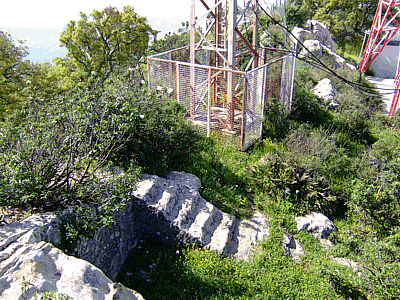 |
| Mobile phone masts invaded the Roman ruins |
TARIFA There is a spot near Tarifa - and close to the Roman ruins at Baelo Claudia - called locally La Silla del Papa (or The Pope's Chair). Alas, these Roman ruins have never been properly excavated, and they have suffered modern day pressure with an invasion of the area by several mobile phone masts. But a recent meeting held at the Baelo Claudia centre there has set the bases for a number of projects aimed at revealing more about the Pope's Chair. This thanks to an ongoing agreement between the Council for Culture and the Casa Velázquez High Spanish Studies, based in France.>>>
One of the main projects on the table at the meeting was to begin excavations at the Proto-Historic Oppidium at Tarifa, called, you guessed it, the Pope's Chair.
One of the main projects on the table at the meeting was to begin excavations at the Proto-Historic Oppidium at Tarifa, called, you guessed it, the Pope's Chair.
Some prospective work was carried out in 2008 and in 2010, but for this year a new phase is planned in the shape of new prospective work prior to a full dig planned for 2014.
Plans for Baelo Claudia itself include a General Investigative Project for the basilica at one of the corners of the present site, southeast of the forum, headed by Bertrand Goffaux, of the University of Poitiers. The objective here is to reveal a more complete sense of a working Roman city, including its public and private spaces during the various phases of the city's growth.
When this project is completed, conclusions will be drawn about traffic and public circulation, as related to its buildings, be they religious, political, commercial, craft workshops, etc.
The Pope's Chair
Investigations into this area have already revealed that this is probably a large urban centre, the exact nature of which is uncertain.
However, it is likely, according to the experts at the meeting, that its origins are Bastulo-Punic once called Bailo and located at the top of the Sierra de la Plata, today within the municipality of Tarifa. It is also likely that it eventually moved down to the coast during the reign of Augustus (16 January 27 BC – 19 August AD 14).
Aside from that, digs carried out in 2007 - 2009 have offered abundant information on urban planning during the Republican era, as well as an earlier occupation in the 10th or 9th century BC

No comments:
Post a Comment